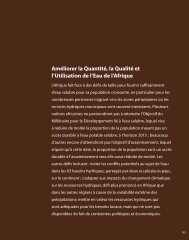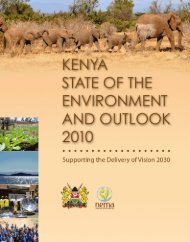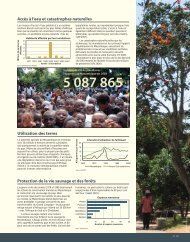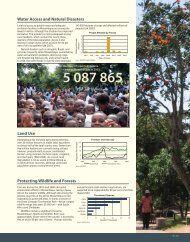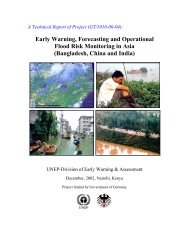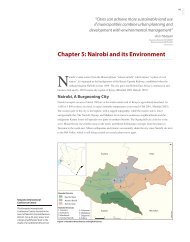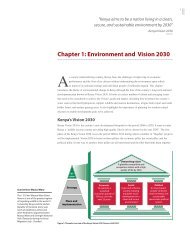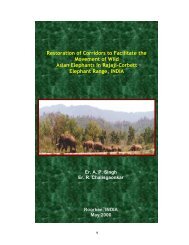Uganda Atlas of Our Changing Environment - GRID-Arendal
Uganda Atlas of Our Changing Environment - GRID-Arendal
Uganda Atlas of Our Changing Environment - GRID-Arendal
Create successful ePaper yourself
Turn your PDF publications into a flip-book with our unique Google optimized e-Paper software.
An early morning ride through a cool and refreshing Mabira (natural) forest along the Kampala-Jinja Highway (2008)<br />
Forest resources in <strong>Uganda</strong> comprise <strong>of</strong> both<br />
natural forests and plantations. Natural forests<br />
include tropical high forests and woodlands while<br />
plantations comprise both pines and hardwoods. Forests<br />
and woodlands cover approximately 4.9 million hectares<br />
which is approximately 20% <strong>of</strong> the total country area. Of<br />
these, 924,000 ha are tropical high forests, 3,974,102 ha<br />
are woodlands while 35,066 ha are forest plantations.<br />
Forests in <strong>Uganda</strong> occur as gazetted areas (forest<br />
reserves), other protected areas (national parks) and<br />
as forests on private land. Forests and woodlands are<br />
estimated to have covered about 10,800,000 ha (45%)<br />
<strong>of</strong> <strong>Uganda</strong>’s surface area in around 1890. Since then,<br />
the size <strong>of</strong> the forest estate has drastically shrunk. For<br />
example, at the beginning <strong>of</strong> the 20th century, <strong>Uganda</strong>’s<br />
tropical high forests covered 3,090,000 ha or 12% <strong>of</strong> the<br />
country’s area. Over the years the forests have been<br />
gradually cleared and today estimates indicate reduction<br />
to about 730,000 ha, which is only (3%) <strong>of</strong> <strong>Uganda</strong>’s area.<br />
36<br />
Forests<br />
Since the colonial era in <strong>Uganda</strong>, gazettement <strong>of</strong><br />
forest resources has been undertaken under three<br />
main categories which still form the back borne <strong>of</strong><br />
the current gazettement plans. The aim is to ensure<br />
continuous supply <strong>of</strong> forest goods and services to the<br />
people <strong>of</strong> <strong>Uganda</strong> in perpetuity. The categories therefore<br />
include supply <strong>of</strong> goods especially hardwood timber;<br />
protection <strong>of</strong> water catchments and control <strong>of</strong> erosion;<br />
and increased production <strong>of</strong> forest goods through<br />
establishment <strong>of</strong> forest plantations. Presently, most <strong>of</strong><br />
the forest cover under protection is located on the upper<br />
slopes <strong>of</strong> mountains and highlands. Besides biodiversity<br />
conservation, the forests in these highland areas are<br />
for protection <strong>of</strong> important water catchments and for<br />
erosion control. In other parts <strong>of</strong> the country, forests<br />
were gazetted primarily for biodiversity conservation and<br />
supply <strong>of</strong> timber.<br />
NEMA 2009



